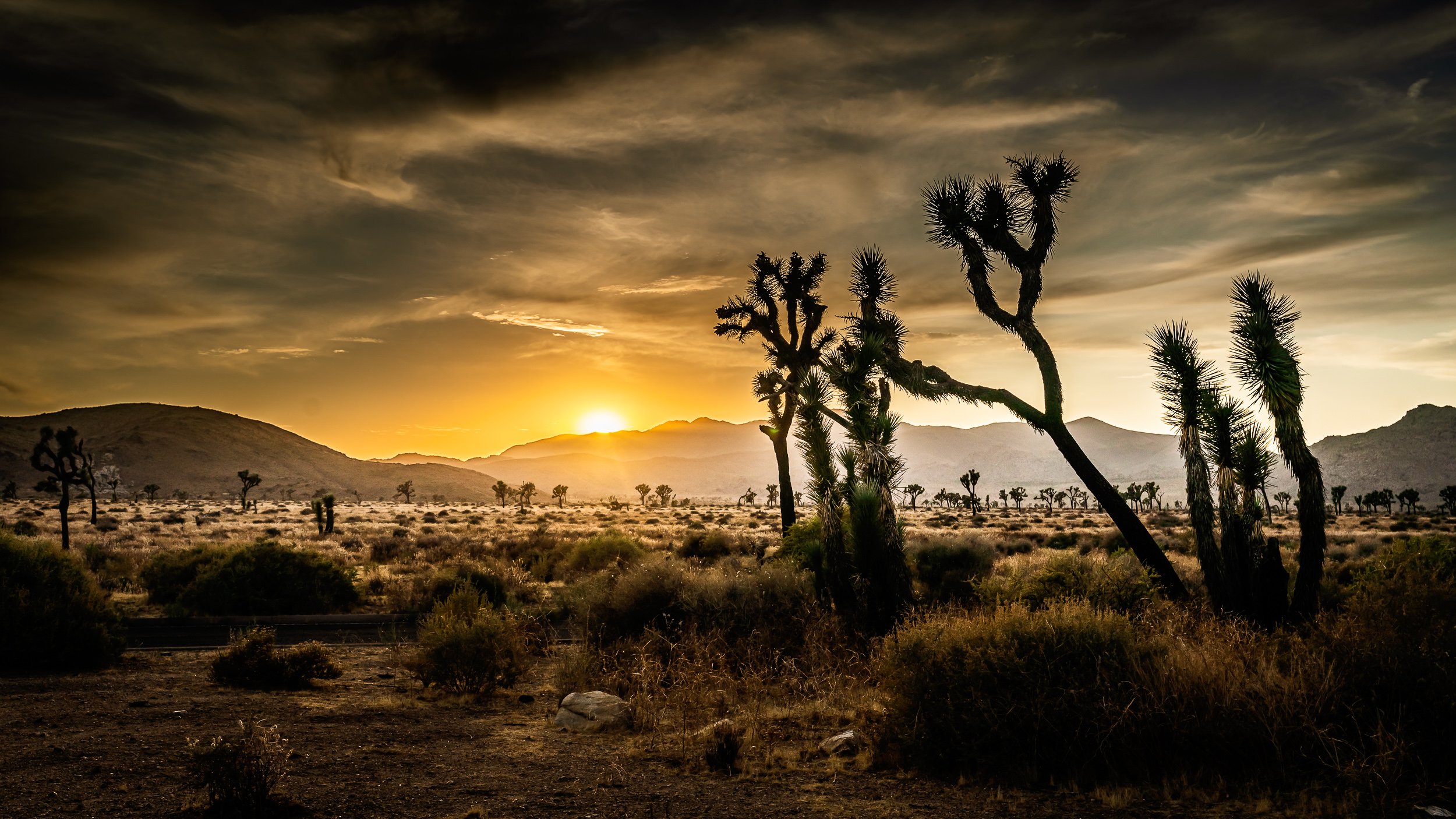
Joshua Tree National Park
Joshua Tree National Park, located 127 miles east of Los Angeles, is comprised of two distinct desert ecosystems, the Mojave and the Colorado. The Mojave Desert covers most of the park's 794,000 acres and includes 18 major vegetation zones that range from creosote bush scrub at the lower elevations to limber pine forests in the highlands. Read More...
The Colorado Desert encompasses just 24,800 acres. The Colorado Desert is a low rainfall area that averages about 4 inches of rain each year. Extreme summer temperatures range from 120 to 130 degrees, while the wintertime highs are usually around 65 degrees. The flora in this region is varied, including cactus, chaparral brush, and juniper trees. The park has over 2 million visitors each year, and it's not hard to see why. It has some of the most spectacular scenery in the country. Joshua Trees, are sometimes called yucca palms, tree yuccas, or palm tree yuccas. They received their name in the mid-1800s, from Mormon Settlers traversing the desert in the mid-1800. It is told that the shape of the tree reminded the settlers of the story where Joshua reaches up his hands to the sky in prayer. By the 1870s, some Mormons were referring to the Yucca Palm as “The Joshua.” The oldest Joshua Tree is estimated to be approximately 1,000 years old, but this tree may be an outlier. The average lifespan of a Joshua Tree is said to be about 500 years.
My best opportunity to visit the park was in mid-summer. And while I knew touring the low desert in the mid-summer wasn’t the brightest thing to do, I stocked up on water, applied sunscreen, and gave it a shot. I’m glad I did. It’s one of the more unique national parks that I have visited and the sunsets in Joshua Tree National Park, are perhaps, the most vibrant I have ever seen.













